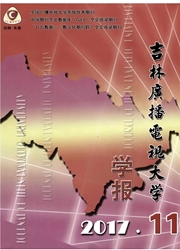

 中文摘要:
中文摘要:
目的 综合分析面肌痉挛微血管减压术后迟发性面瘫的临床治疗效果、为治疗迟发性面瘫患者提供科学的数据参考。方法 在2014年6月~2016年4月,选取在我院神经外科收治的确诊单侧面肌痉挛患者72例,将患者随机分为对照组和实验组(每组均为36例),两组患者均接受面肌痉挛微血管减压手术。对照组应用常规治疗方法、实验组应用尼莫地平治疗方法。采用SPSS20.0统计学软件统计分析两组患者的手术有效率、术后面瘫发生率等参数指标。结果 ②对照组患者手术有效率为83.33%(30/36),实验组患者手术有效率为86.11%(31/36),两组患者手术有效率比较无统计学意义(P〉0.05)实验组术后面瘫发生率为8.33%(3/36),发病时间为(14.26±5.14)d;对照组术后面瘫发生率为11.11%(4/36),发病时间为(14.55±5.22)d;实验组术后面瘫发生率、发病时间与对照组比较无统计学意义(p〉0.05);根据术后迟发性面瘫发作等级来看。实验组Ⅱ级有2例、Ⅲ级有1例,对照组Ⅱ级1例Ⅲ级有0例、Ⅳ级有3例,实验组与对照组比较有统计学意义(P〈0.05)。结论 使用尼莫地平治疗方法治疗面肌痉挛微血管减压术后迟发性面瘫的临床治疗效果显著。
 英文摘要:
英文摘要:
Objective To analyze the clinical effect of delayed facial paralysis after microvascular decompression of hemifacial spasm, and to provide scientific data for the treatment of patients with delayed facial paralysis. Methods A total of 72 patients with unilateral facial spasm were enrolled in the Department of Neurosurgery from June 2014 to April 2016. And the patients were randomly divided into control group and experimental group with 36 cases in each group.Patients in two groups were both treated with hemifacial spasm microvascular decompression. The control group was treated with conventional therapy, and the experimental group was given nimodipine treatment.Parameter indexes including surgical efficiency and postoperative paralysis incidence of patients in the two groups were statistically ana- lyzed by SPSS20.0 statistical software. Results (1)The effective rate was 83.33%(30/36) in the control group and 86.11% (31/36) in the experimental group. There was no significant difference in the operative efficiency between the two groups (P〉0.05). (2)The incidence of postoperative facial paralysis in the experimental group was 8.33% (3/36) ,and the onset time was (14.26±5.14)d.The incidence of postoperative facial paralysis was 11.11%(4/36) in the control group, and the onset time was (14.55±5.22). There was no statistically significant difference in the incidence of postoperative facial paralysis and the onset time between the experimental group and control group (P〉0.05). However, according to the postoperative delayed facial paralysis attack level, there were 2 cases in Grade Ⅱ and 1 case in Grade Ⅲ in the ex- perimental group. There was 1 case in Grade Ⅱ, 0 case in Grade m and 3 cases in Grade Ⅳ in control group .There was significant difference between the experimental group and the control group(P〈0.05). Conclusion The clinical effect of nimodipine in the treatment of delayed facial paralysis after hemifacial spasm microvascular decompression is sign
 同期刊论文项目
同期刊论文项目
 同项目期刊论文
同项目期刊论文
 期刊信息
期刊信息
